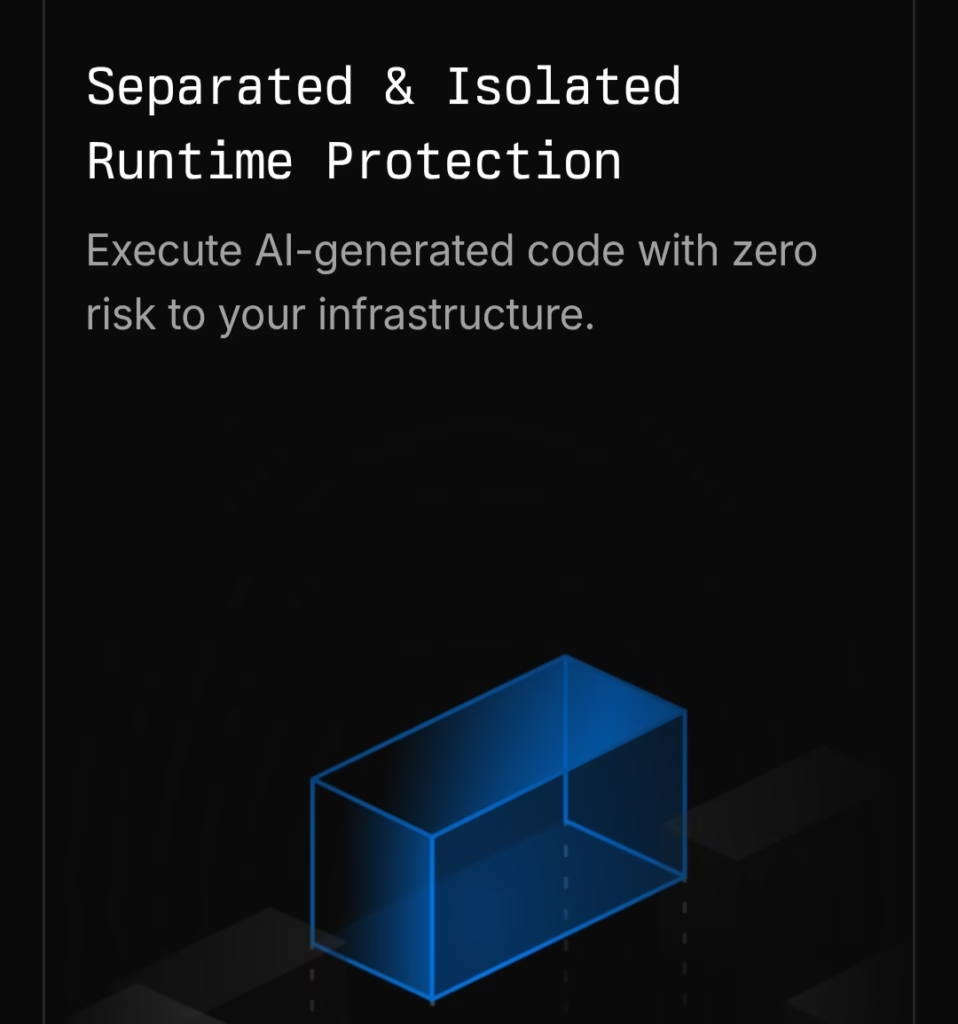In today’s fast-paced AI and machine learning landscape, setting up and managing development environments is a constant challenge. Engineers often waste hours debugging broken dependencies, mismatched versions, or inconsistent configurations across teams.
Enter Daytona — an open-source, lightning-fast, secure AI development environment manager that helps developers launch ready-to-code sandboxes in seconds. In this blog post, we’ll explore what Daytona is, why standardized dev environments matter for AI/ML workflows, and how you can use Daytona to simplify, automate, and secure your entire AI development lifecycle.

What Is Daytona?
It is an open-source tool that automates the creation of reproducible, secure, and It development environments. Whether you’re running on local machines, the cloud (AWS, GCP, Azure), or on-premise infrastructure, Daytona provides instant, sandboxed environments with all your tools, libraries, and dependencies pre-installed.
Each workspace is:
- Fully isolated and secure
- Pre-configured with language runtimes (Python, Node.js, etc.)
- Compatible with Docker and OCI containers
- Accessible from any IDE, including VS Code and JetBrains
- Self-hostable for enterprises and compliant with SOC 2, ISO 27001, and GDPR
Daytona = Docker + Dev Containers + Codespaces — but faster, open-source, and fully customizable.
Why Developers Need Standardized AI Development Environments
Modern AI and ML teams depend on complex tech stacks: CUDA drivers, Python environments, ML libraries (like PyTorch or TensorFlow), Jupyter notebooks, and more. When team members use different setups, it causes:
- Configuration drift
- Environment-specific bugs
- Onboarding delays
- Slower experimentation cycles
With Daytona, every developer works in the same sandboxed workspace. That means no more “it works on my machine” issues. Daytona helps you:
- Launch reproducible environments in under 100 ms
- Onboard new developers in minutes
- Run multiple AI experiments in parallel
- Protect your system from untrusted or AI-generated code
Standardization = more productivity, less debugging.
Key Features of Daytona
Let’s dive into the top features that make Daytona a must-have tool for AI engineers, data scientists, and DevOps teams:
🚀 1. One-Click Sandbox Creation
It lets you create full-featured workspaces with a single click or CLI command. Just connect a Git repo, define your devcontainer.json, and Daytona handles the rest.
🔒 2. Fully Isolated Sandboxes
Each Daytona workspace is a secure, containerized environment with its own filesystem, network, and processes. Your local machine is protected from crashes, exploits, or AI-generated code gone rogue.
⚙️ 3. Dev Container Support
It is fully compatible with the Dev Container specification, meaning you can reuse existing VS Code or GitHub Codespaces configs.
💻 4. Native IDE Integrations
Use Daytona directly from your favorite editors:
- VS Code extension
- JetBrains Gateway plugin
- Built-in Web IDE
🔗 5. Seamless Git Integration
It workspaces connect to GitHub, GitLab, Bitbucket, and other SCM providers. Clone, commit, and push changes from within the sandbox.
🧠 6. Python + TypeScript SDKs
Automate sandbox creation, execution, file uploads, and teardown using Daytona’s official SDKs.
How Daytona Powers AI/ML Development
It is especially useful for AI/ML teams because it:
- Automates dependency installation (PyTorch, TensorFlow, CUDA, etc.)
- Ensures code + data versioning with Git
- Supports persistent, long-running experiments (e.g., training loops)
- Isolates resources (RAM, CPU, GPU) per experiment or team member
- Enables instant rollback or “forking” of workspace states
Use cases include:
- Experimenting with multiple ML models
- Running Jupyter notebooks in secure environments
- Isolated execution of AI-generated Python code
- Distributed training and parallel hyperparameter search
With Daytona, you don’t need to babysit Dockerfiles or manually maintain conda environments. Your workspace is ready in milliseconds.
Example: Using the Daytona Python SDK
Here’s a quick example of how to use Daytona programmatically with Python:
from daytona_sdk import Daytona, DaytonaConfig, CreateSandboxParams
daytona = Daytona(DaytonaConfig(api_key="YOUR_API_KEY"))
sandbox = daytona.create(CreateSandboxParams(language="python"))
response = sandbox.process.code_run('print("Hello from Daytona!")')
print(response.result)
daytona.remove(sandbox)
Use this workflow to run experiments, execute AI-generated scripts, or automate your CI/CD workflows securely.
Daytona vs GitHub Codespaces vs Docker
| Feature | Daytona | GitHub Codespaces | Docker |
|---|---|---|---|
| Speed | 🔥 Ultra-fast (<100ms) | ⚡ Slower (~15s) | 🐢 Manual setup |
| Open Source | ✅ Yes (AGPL) | ❌ No | ✅ Yes |
| Self-hosting | ✅ Yes | ❌ No | ✅ Yes |
| Dev Container Support | ✅ Yes | ✅ Yes | ⚠️ Requires config |
| GPU Support | ✅ Custom Docker images | ❌ Limited | ✅ Manual |
| Enterprise-Ready | ✅ SOC 2, GDPR, ISO | ✅ | ⚠️ Requires effort |
Verdict: Daytona combines the flexibility of Docker, the developer experience of Codespaces, and the control of open-source infrastructure — all optimized for modern AI teams.
How to Get Started with Daytona
- Install Daytona SDK:
pip install daytona-sdk
- Connect your Git repo:
Add adevcontainer.jsonor Docker image reference. - Launch your workspace:
Use the Daytona CLI, web UI, or IDE extension. - Start coding instantly!
Your AI-ready environment is live in milliseconds.
Final Thoughts
It is a game-changer for AI development teams who care about speed, security, and scalability. Whether you’re training neural networks, managing experiments, or onboarding a remote ML team, Daytona gives you reproducible environments without the overhead.
Try Daytona today and bring speed and sanity back to your AI workflows.